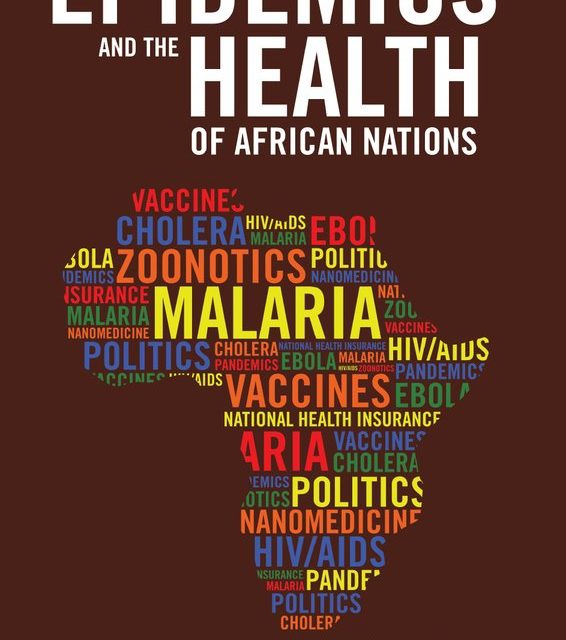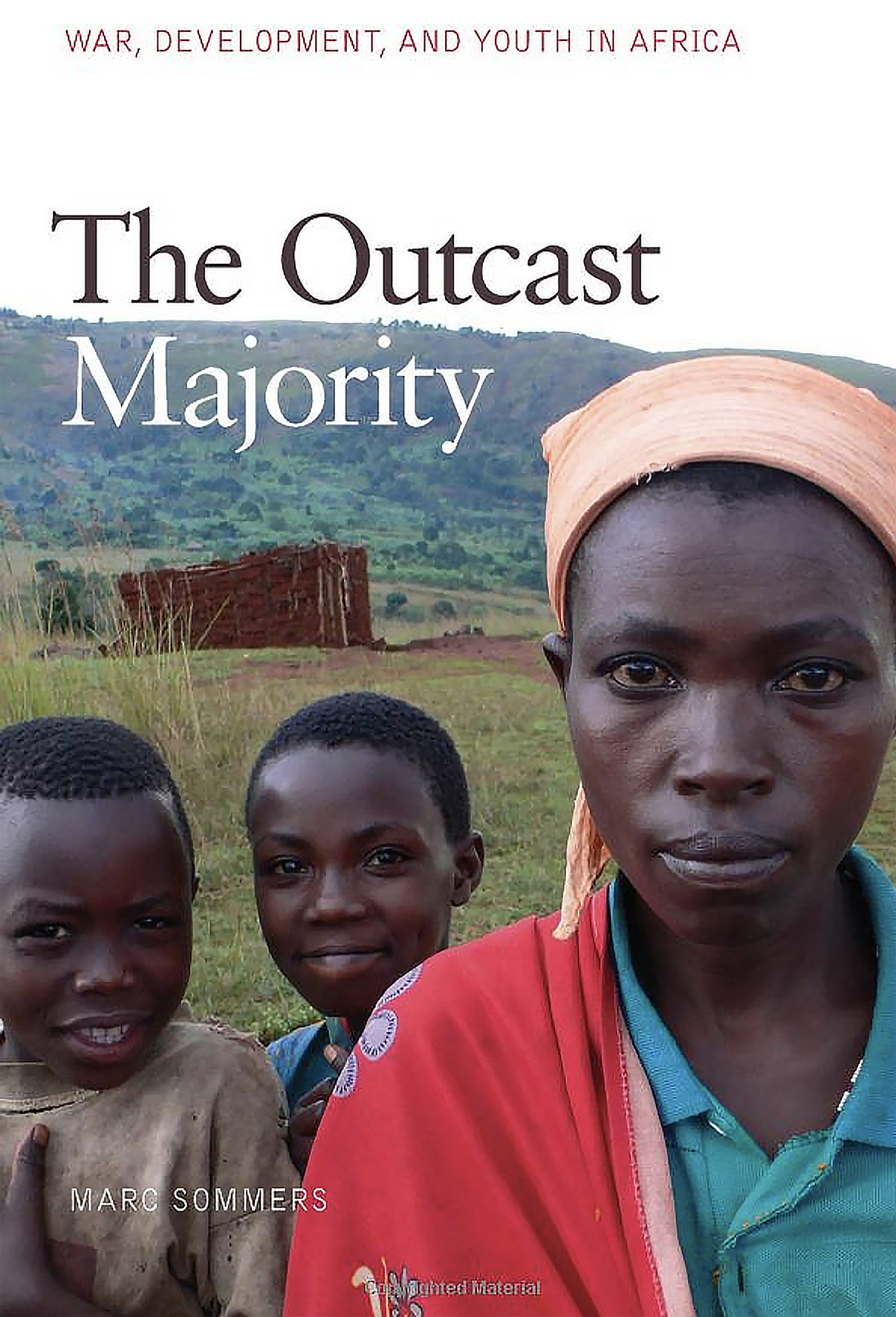Book review
Epidemics and the Health of African Nations published by the Mapungubwe Institute for Strategic Reflection (MISTRA) 2019 and edited by Zamanzima Mazibuko
 Epidemics and the Health of African Nations explores Africa’s vulnerability to diseases and ably demonstrates that diseases don’t happen in isolation, but interact with one another, with outbreaks often exacerbated by social, political and economic influences.
Epidemics and the Health of African Nations explores Africa’s vulnerability to diseases and ably demonstrates that diseases don’t happen in isolation, but interact with one another, with outbreaks often exacerbated by social, political and economic influences.
Of the 10 leading causes of death in Africa, the first seven are epidemics (infectious diseases and non-communicable diseases [NCDs]), followed by maternal deaths and deaths that stem from road injuries. Put this all against a backdrop of Africa’s longstanding battle with malnutrition, an over-reliance on food aid and donor funding and the lack of national health insurance.
The burden of epidemics, particularly in sub-Saharan Africa, has been worsened by a significant increase in NCDs such as heart disease, stroke, cancer, diabetes, mental illness, all previously thought of as diseases of the more affluent. Consequently, there is an increased risk of the interplay of both communicable and NCDs, not forgetting that the interplay is acerbated by social, economic, environmental, and political conditions.
According to the World Health Organization (WHO), a well-functioning health system is built on six health-system building blocks. These are: service delivery, a health workforce, information, medical products, vaccines and technologies, financing, and leadership and governance.
Strengthening health systems involves improving each block and managing their interactions in ways that achieve more equitable and sustainable development across health services and health outcomes. That being said, it should be remembered that the building blocks are not exhaustive, as additional sectors are often needed to contribute to resilient health systems.
In 2015, 90% of global malaria cases and 92% of malaria deaths were in the sub-Saharan region; and between 2000 and 2015, 83% of global cholera deaths occurred in sub-Saharan Africa.
This book aims to explore the causes of such imbalances. By focusing on a selection of epidemics (HIV/AIDS, malaria, cholera) from which valuable lessons can be drawn on the importance of strong health systems in preventing, detecting and responding to calamitous diseases, thereby helping to prevent outbreaks from becoming epidemics. Included in the selection, based on the enormity of its impact, is Ebola, which devastated the West African region in 2014 – 2016 and provided crucial lessons for addressing epidemics.
HIV/AIDS has been the most calamitous epidemic in recent history, with the worst of the epidemic in eastern and southern Africa, where 19.6 million people were living with HIV in 2018.
Yet, as HIV/AIDS is increasingly classed as a chronic condition, the diagnosis of other non-infectious chronic conditions is not only on the rise, but Africa is experiencing the highest increase in premature deaths from NCDs. For instance, in South Africa, the growing concern with NCDs emerges amidst the world’s largest HIV epidemic and largest antiretroviral therapy (ART) programme. For this reason, there is an urgent need to explore practices and prospects for NCD care in African contexts, where health systems are under-resourced and heavily burdened by infectious diseases.
Estimates of the population at risk of malaria epidemics in Africa range from 52 million to 144 million. Furthermore, WHO estimates that 23 countries on the continent are epidemic prone. Although there has been a marked improvement in the rate of malaria outbreaks and deaths since 2000, plus significant progress in initiatives to control and eliminate malaria, a range of factors continue to trigger new occurrences {what are these factors].
The worst cholera outbreak in Africa took place in Zimbabwe in 2008-2009 and resulted in 98,531 recorded cases and 4,282 deaths. A combination of the large-scale collapse of the water and sanitation infrastructure, a debilitated health care system, and a struggling economy contributed to the outbreak.
Ebola Viral Disease (EVD) is recognised as one of the deadliest viral diseases in the world and was named Ebola because the first outbreak occurred in 1976 in a village close to the Ebola River in Democratic Republic of Congo. Since then, most cases of Ebola have occurred in Africa.
The outbreak of the disease in Africa (and other parts of the world) from 2014-2016 recorded more causalities than in any prior outbreak. During this period Sierra Leone, Liberia and Guinea recorded a total of 11,308 deaths.
Although several outbreaks of epidemics had occurred in Nigeria, no case of Ebola was documented until 2014. The outbreak caused extreme anxiety due to the huge size of the population (more than 180 million) and poor health-care service. However, Nigeria’s noteworthy response recorded just 20 Ebola cases and eight deaths; 11 of these cases were health-care workers. Six healthcare workers survived and five died, including the renowned Dr Ameyo Stella Adadevoh, who correctly identified and quarantined Nigeria’s patient zero, 40-year-old Patrick Sawyer, who flew into Nigeria from Liberia already ill. Adadevoh stood her ground and isolated patient zero in the face of immense pressure from those who initially disagreed with her.
Despite the poor state of health services delivery in a country that is bedevilled by many challenges, there are lessons to be learnt from Nigeria’s success story. The country managed to contain the outbreak due to several factors, namely: early detection and the prompt introduction of control measures (to prevent spreading), adequate funding, collaboration between the health sector and authorities in key sectors such as corporate and religious leaders, intensive training and commitment to public education.
In addition to Africa’s longstanding battle with epidemics, there is growing concern over zoonotic diseases caused by a shift in the ecology of human/animal interactions. Simply put, an expanding urbanised global population has given rise to these infectious diseases that can be transmitted between animals and humans. Examples include anthrax, Rift Valley fever, Zika, and severe acute respiratory syndrome (SARS.
A 2018 WHO study indicated that zoonotic diseases are likely to cause severe epidemics given the current global health landscape. Based on this predictive study, it should not be surprising that the world is currently grappling with the ongoing COVID 19 outbreak, a pandemic that further exposes Africa’s weak health systems.
Accelerated research has an important role to play in the reduction of global health imbalances. Research on disruptive technological innovations, which can deliver faster economic treatment and diagnosis. should be top of the agenda. Disruptive technological innovation presents the possibility for African countries to “leapfrog” into improved health care.
This book presents nanotechnology as one such disruption, which has the potential to provide affordable, effective medicine and disease prevention. Although not without its own restrictions, nanomedicine, as it is called, has the potential to help make medicines and treatments accessible to all.
Unsurprisingly, a call for increased government spending on health care is among the authors’ many recommendations. Other include investment in water, sanitation and hygiene infrastructure as well as taxes on sugary foods and drinks, tobacco products and alcohol to part fund the control of NCDs.
A recurring theme in the book is the need for a multifaceted, syndemics approach to the management of diseases, which takes into account the interrelationships between disease and political and socio-economic contexts. It is futile to treat patients who will return home to poor nutrition and inadequate water infrastructure, which continuously exposes them to diseases.
Sarah Nyengerai is an academic and freelance writer based in Zimbabwe with a strong passion for social, cultural, economic and political issues that affect women. She believes literary works form the foundation for the dialogue required to sustain momentums of change and aims to bring attention to such matters. A member of NAFSA (Association for International Educators) and Forum for African Women Educationalists (FAWE), Sarah is actively involved in the advancement of education for women.












